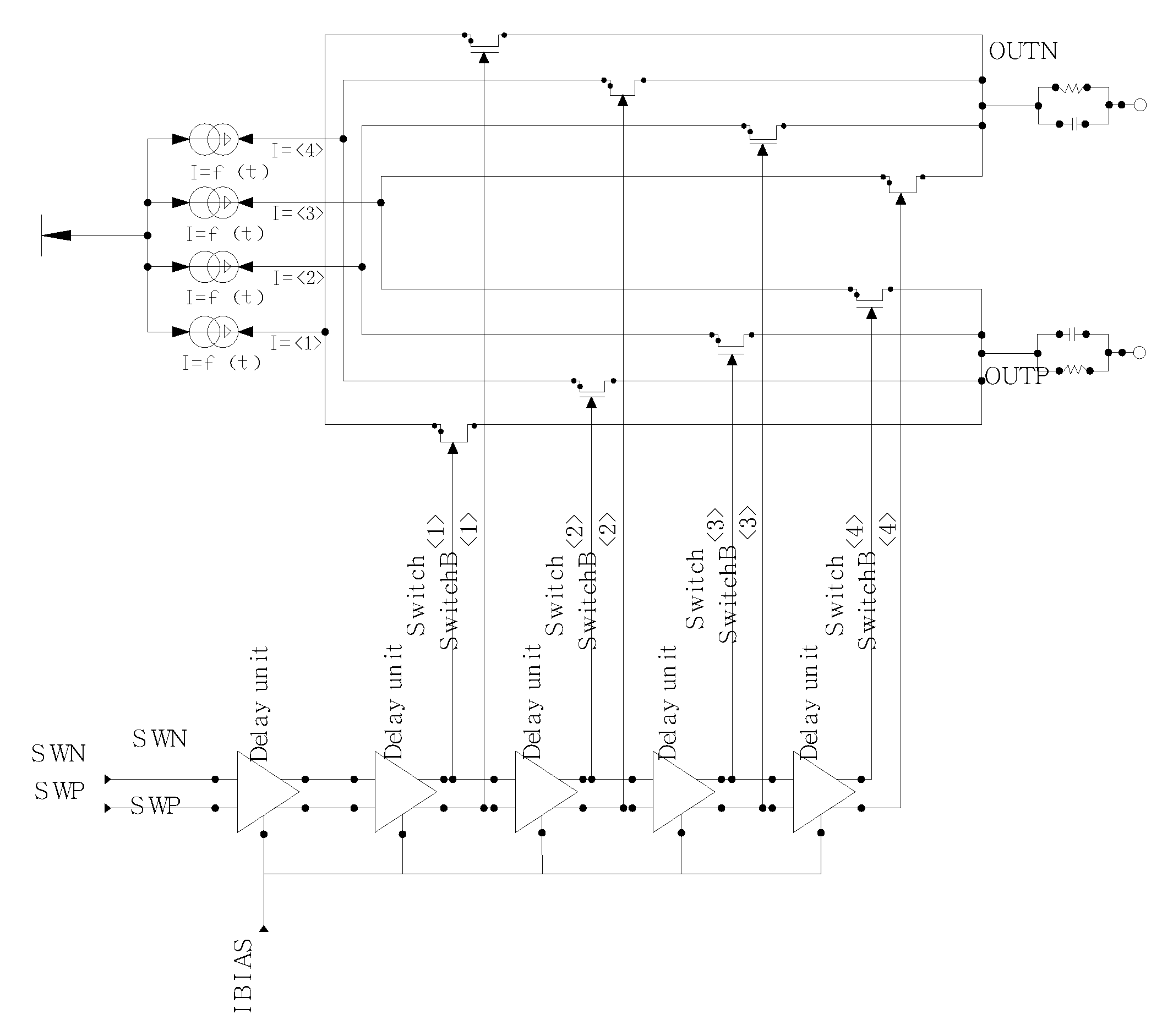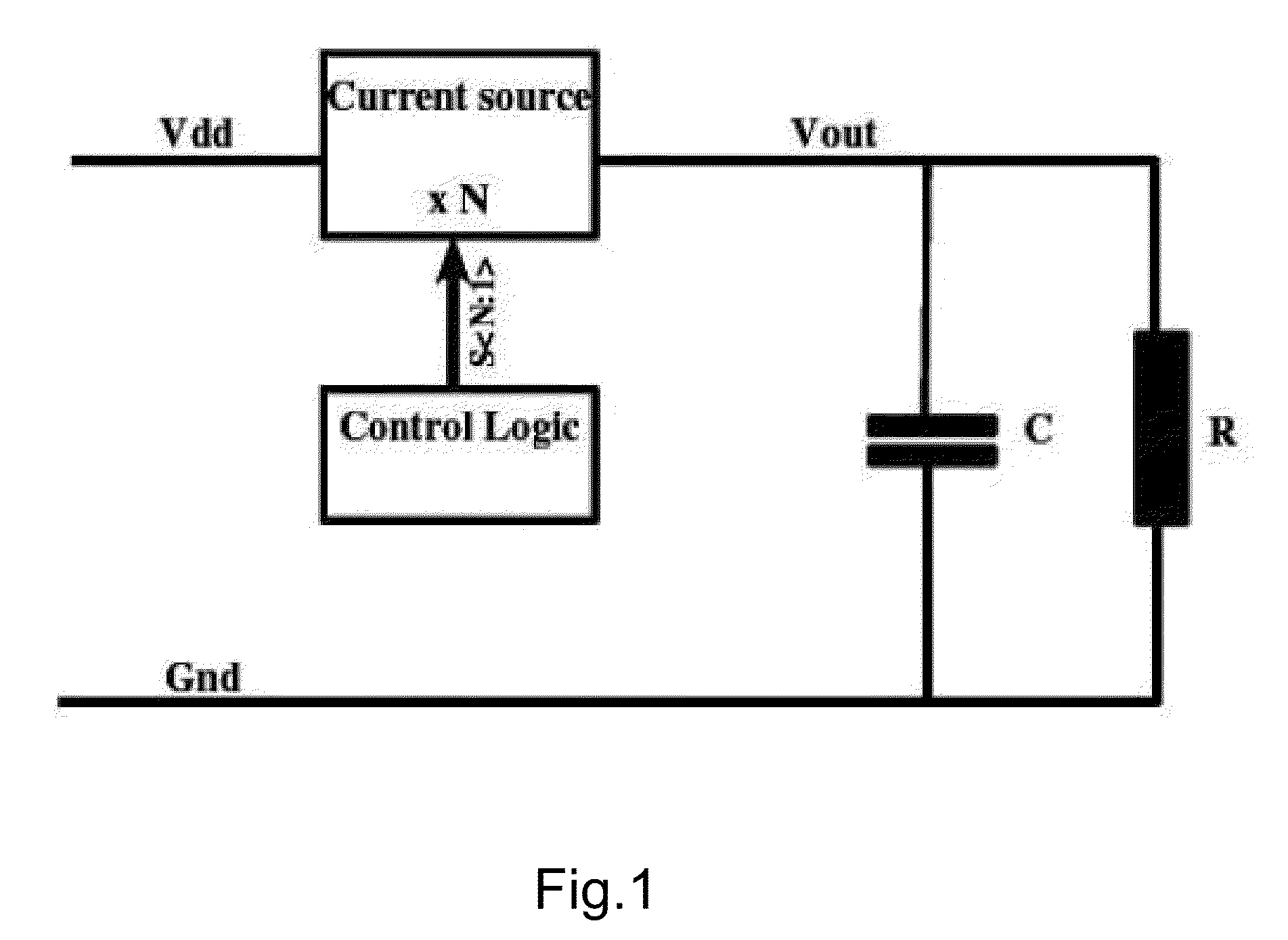Stage by stage delay current-summing slew rate controller
a current-summing and delay technology, applied in pulse manipulation, pulse technique, instruments, etc., can solve the problems of low slew rate (sr), difficult control, and no linear slew rate, and achieve wide adjusting range and simple structure.
- Summary
- Abstract
- Description
- Claims
- Application Information
AI Technical Summary
Benefits of technology
Problems solved by technology
Method used
Image
Examples
example i
[0043]Referring to FIG. 2 of the drawings, a stage by stage delay current-summing slew rate controller is shown, which includes a delay controller, a delay cell array, a current source array, a switch array, a load. The delay cell array includes N delay cells, the switch array includes N switches, and the switch includes N current sources, wherein N>1. The delay controller is connected with the control ports of the delay cells respectively, and the delay cells are connected with the control terminal of the switches respectively. One of the connecting terminals of the switch is connected with the output end of the current source, and the other end of the connecting terminals of the switch is connected with one end of the load, and the other end of the load is connected to the ground.
[0044]The switches are connected with the current sources respectively in series.
[0045]The input ends of the current sources are connected with the power supply in parallel.
[0046]The current source is mir...
example ii
[0063]Referring to FIGS. 2 and 3 of the drawings, the present invention is applied to 4 stages delay current-summing slew rate controller, and the circuit is illustrated as follows.
[0064]The 4 stages delay current-summing slew rate controller includes a delay controller, a delay cell array with 4 delay cells, a current source array with 4 current sources, a switch array with 4 switches, and a load. The 4 switches of the switch array are connected with 4 current sources of the current source array respectively in series.
[0065]The delay controller is connected with the control ports of the 4 delay cells respectively, and the 4 delay cells are connected with the control terminal of the 4 switches of the switch array respectively. One of the connecting terminals of the switches are connected with the output end of the 4 current sources respectively, and the other end of the connecting terminals of the switches are connected with one end of the load, and the other end of the load is conn...
example iii
[0069]20 stages delay current-summing slew rate controller is used to depress the overshooting. The principle of the 20 stages delay current-summing slew rate controller is same with the 4 stages delay current-summing slew rate controller.
[0070]The work flow is illustrated as follows. Firstly, the delay cell array delays the input signal, the delay controller controls the delay time of each delay cell and gates the delay cell needed to work, then output signals of delay cells of the delay cell array control the corresponding switches of the switch array respectively, lastly the current sources of the current source array combine and output current under the control of the corresponding switches respectively. The output current drives the load to produce output voltage. During the working process, the output current and voltage are controllable, so that the output voltage slew rate can be controlled.
PUM
 Login to View More
Login to View More Abstract
Description
Claims
Application Information
 Login to View More
Login to View More - R&D
- Intellectual Property
- Life Sciences
- Materials
- Tech Scout
- Unparalleled Data Quality
- Higher Quality Content
- 60% Fewer Hallucinations
Browse by: Latest US Patents, China's latest patents, Technical Efficacy Thesaurus, Application Domain, Technology Topic, Popular Technical Reports.
© 2025 PatSnap. All rights reserved.Legal|Privacy policy|Modern Slavery Act Transparency Statement|Sitemap|About US| Contact US: help@patsnap.com



